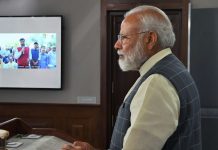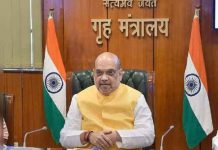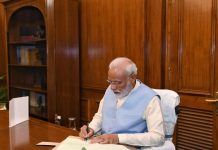 Reliance Industries Chairman Mukesh Ambani bagged the first place on Forbes India Rich List 2019 for the 12th consecutive year with Net Worth of $51.4 billion, while Adani Group Chairman Gautam Adani figured on the second spot. Ironically, India’s ranking on the Global Hunger Index (GHI) has dropped from 55 (2014) to 103 (2018) over the past five years.
Reliance Industries Chairman Mukesh Ambani bagged the first place on Forbes India Rich List 2019 for the 12th consecutive year with Net Worth of $51.4 billion, while Adani Group Chairman Gautam Adani figured on the second spot. Ironically, India’s ranking on the Global Hunger Index (GHI) has dropped from 55 (2014) to 103 (2018) over the past five years.
Ambani added $4.1 billion to his net worth as Jio, the three-year-old telecom unit of his Reliance Industries, became one of India’s biggest mobile carriers with 340 million subscribers, according to the Forbes magazine.
A “challenging year for the nation’s wealthies” because of the economic slowdown, spelt an 8 per cent fall in the total wealth of the tycoons on the 2019 list, amounting to $452 billion.
“In all, 14 were poorer by $1 billion or more, and nine members from last year’s ranks dropped off. More than a third of that decline was due to the remarkable largesse of tech tycoon Azim Premji, who gave away a chunk of his fortune in March and consequently dropped in the ranks to No. 17 from No. 2,” Forbes added.
The second spot on the list, however, is bagged by Gautam Adani the chairman of the Adani group with an increase in his net worth by $15.7 billion. He rises from the eighth spot to second after a nine-year wait. Adani secured permission in June to start work on an Australian coal mine. He has also ventured into a slew of new businesses from airports to data centers.
In the list after the top ranks are Ashok Leyland owners Hinduja brothers, Shapoorji Pallonji Group’s Pallonji Mistry, Kotak Mahindra Bank’s Uday Kotak, and HCL Technologies’ Shiv Nadar. A $4 billion boost had propelled Uday Kotak into the top five for the first time.
Six newcomers have made their debut including Byju Raveendran (no. 72, $1.91 billion), Manohar Lal and Madhusudan Agarwal (No. 86, $1.7 billion) of Delhi-headquartered Haldiram Snacks and Rajesh Mehra (no. 95, $1.5 billion) of Jaquar. Meanwhile, Autoparts maker Vivek Chaand Sehgal’s net worth more than halved to $2.45 billion given the drastic slowdown in the automobile industry.
While there was an increase in the number of richest Indians in the latest Forbes list, India ranks among those 45 countries that are experiencing “serious levels of hunger”. Even countries like China (25th), Nepal (72nd), Myanmar (68th), Sri Lanka (67th) and Bangladesh (86th) fare well, as compared to India on the Global Hunger Index (GHI). Almost 36 per cent of children under age five are underweight, and every day 3,000 children die from poor diet. The scarcity of nutritious food at the growing stage not only hampers their physical and cognitive development but also weakens their immunity and makes them prone to various infections and diseases, thus increasing the mortality rate which is one of the main indicators for Global Hunger Index (GHI).
An Indian government official revealed that as many as 300 million Indians were lifted above the poverty line between 2004 and 2018. NITI Aayog CEO Amitabh Kant claimed that every Indian today has a biometric ID card, mobile phone and bank account. “The mobile data of India today is more than the mobile data of the US and China put together. And it is happening because the cost of the data in India today is one-tenth of the cost of the United Kingdom and one-twentieth (1/20) of the United States of America,” he said.
In July, a United Nations report pointed out that more Indians are becoming obese while the number of undernourished people in the country have declined. In India, the number of undernourished people declined from 253.9 million in 2004-06 to 194.4 million in 2016-18. However the number of adults (18 years and older) who are obese grew from 24.1 million in 2012 to 32.8 million in 2016, the report titled the State of Food Security and Nutrition in the World 2019 highlighted.
It was issued by United Nations’ Food and Agriculture Organization (FAO), the International Fund for Agricultural Development (IFAD), the UN Children’s Fund (UNICEF), the World Food Programme (WFP) and the World Health Organization (WHO). The number of children (under 5 years of age) who are overweight stood at 2.9 million in 2018, it said.
In percentage terms, prevalence of undernourishment in the total population in India was 22.2 per cent in 2004-06 and 14.5 per cent in 2016-18. Prevalence of wasting in children (under 5 years of age) was 20.8 per cent in 2018, while the Prevalence of obesity in the adult population was three per cent in 2012, increasing to 3.8 per cent in 2016
“We must foster pro-poor and inclusive structural transformation focusing on people and placing communities at the centre to reduce economic vulnerabilities and set ourselves on track to ending hunger, food insecurity and all forms of malnutrition,” the UN report said.
India’s poverty reduction “seems relatively more modest – moving from 48.9 per cent in 1987 to 21.2 per cent in 2011, it said.
In the Indian Himalayas, economic slowdown coupled with natural resource depletion and climate change negatively impacted on food production and employment opportunities. This resulted in increased threats to food security due to lower purchasing power, it added.
The report also took note of the Mahatma Gandhi National Rural Employment Guarantee Scheme (MGNREGS), introduced by India in 2005, the largest public works programme in the world. “Unlike the previous cases, the MGNREGS was not designed to address employment problems arising from an economic downturn or to rebuild infrastructure damaged by a natural disaster,” the report said.













